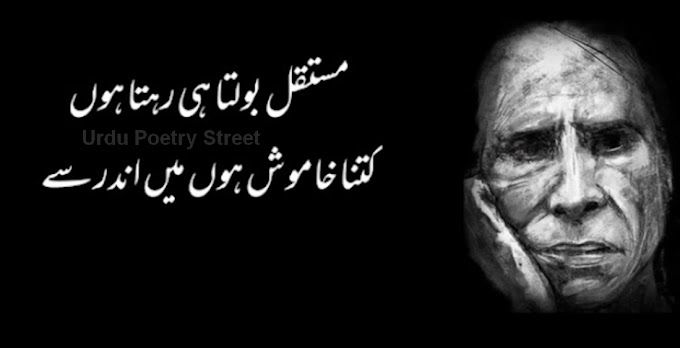Qateel Kaisy Bhulaein Hum Ehl-e-Dard Usy
Dillon Mein Chhor Gea Apni Dastan Woh Shakhs
قتیل کیسے بھلائیں ہم اہل درد اسے
دلوں میں چھوڑ گیا اپنی داستان وہ شخص
Translation:
"How can we forget, we, the people of pain,
That person left his story in our hearts."
Interpretation:
This couplet reflects a poignant sentiment of remembrance and loss, capturing the enduring impact of a person who has left an indelible mark on the hearts and minds of those who have known them. The speaker, addressing themselves as "ehl-e-dard" or "people of pain," suggests a shared experience of suffering or emotional turmoil among those who were close to the individual being referred to.
The first line, "Qateel kaise bhulayein hum ehl-e-dard usay," expresses the difficulty of forgetting someone who has had a profound impact on the lives of the speaker and others who share their pain. Despite the passage of time or the circumstances of separation, the memory of this person remains deeply ingrained in their hearts and minds.
The second line, "Dilon mein chor gaya apni dastan woh shakhs," evokes a sense of longing and nostalgia for the person who has departed. It suggests that even though they may no longer be physically present, their story, their essence, and their influence live on in the hearts and memories of those who knew them. The word "shakhs" here refers to the individual who has left, emphasizing their unique and irreplaceable presence in the lives of the speaker and their community.
Overall, this couplet reflects the enduring power of memory and the profound impact that certain individuals can have on our lives. It speaks to the universality of loss and the resilience of the human spirit in the face of separation, inviting readers to reflect on the lasting legacy of those who have touched our lives in profound and meaningful ways.










